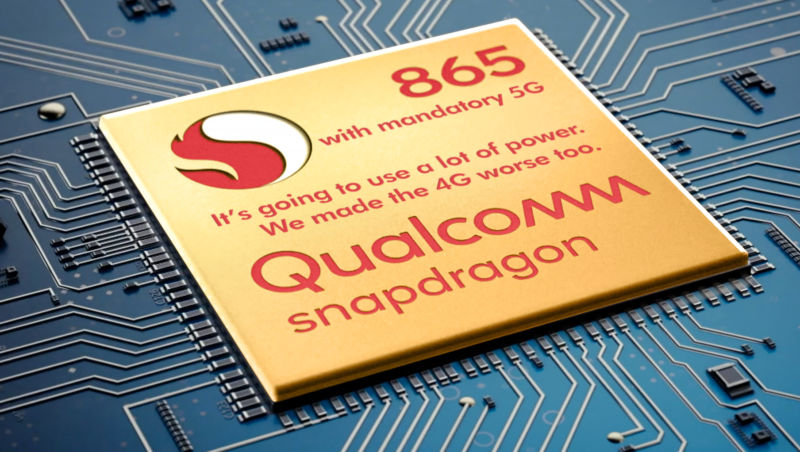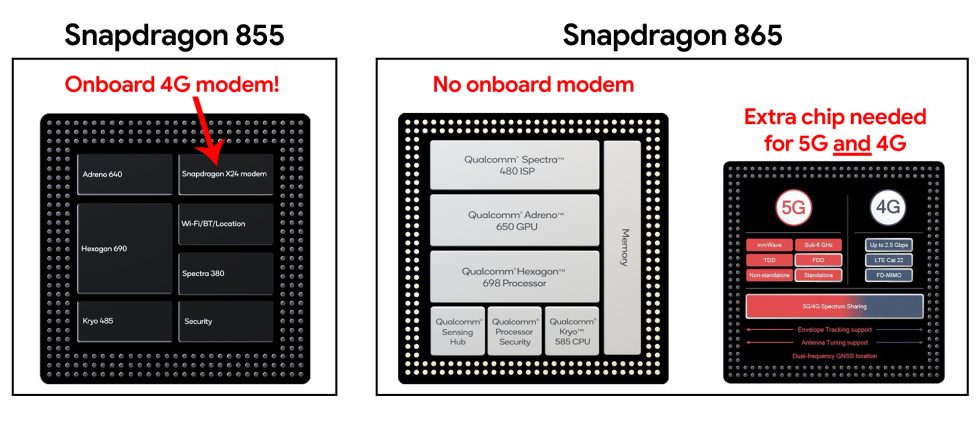
Qualcomm recently took the wraps off its flagship SoC for 2020, the Snapdragon 865. As usual, we can expect this chip in all the high-end Android smartphones in 2020, and it's 25 percent faster than last year, with fancy new camera features and AI-accelerating co-processors. What's unusual is the way Qualcomm designed the LTE modem in the Snapdragon 865: it doesn't have one.
This means nearly every flagship Android phone will be a 5G phone in 2020, and putting the 5G and 4G on a giant extra chip means smartphones are going to use way more power, no matter which cell network you're connected to. When 5G networks are only going to be in their infancy in 2020, this sounds like an across-the-board downgrade to me.
In 2019, 4G had a big power and size advantage over 5G thanks to the all-in-one SoC with an integrated modem solution. In 2020, Qualcomm is so desperate to make 5G a thing that it's making 4G worse.
More power-hungry modems for everyone

We've spent the past year railing against early 5G hardware from Qualcomm because 1) the networks it supports barely exist and 2) the hardware requires significant compromise in your smartphone design, even if you never use 5G. The whole reason a modern smartphone works so well is due to the SoC, the System on a Chip.
This combines every major computing component onto a single chip, which you can see in the diagram above. There's a CPU, GPU, an "ISP" for camera functionality, a Qualcomm "Hexagon" co-processor, Wi-Fi, Bluetooth, and—in every flagship SoC released in the last seven years except for the Snapdragon 865—an onboard cellular modem. Mashing everything into a single chip saves power, and it saves space, which means room for a bigger battery.
We've already seen what happens when Android phones ship with separate modems. The first 4G phones with separate modems, like the HTC Thunderbolt, were legendary disasters. The Thunderbolt was a hot, slow, buggy mess, and it had a battery life of only a few hours. It was so bad that one HTC employee even apologized for releasing it. Qualcomm's 2019 5G package was the Snapdragon 855 with a separate X50 modem, and those were fireballs, too.
reader comments
216